#historic clothing
Text
Disclaimer: I know that some folks continue to wear some or all of these items in the 21st century. This is more asking what you wish would become fashionable again so you could wear it without receiving any second glances from strangers
#history#historic clothing#clothing history#fashion#clothing#period drama#jane austen#tumblr poll#tumblr polls#poll#polls#cottagecore-raccoon
4K notes
·
View notes
Text
The Monarch & the Ambassador; Zukka

This is a design of adult Zuko and Sokka as Fire Lord and a representative of the Watertribe. I took inspiration from different historic/indigenous cultures that fit the respective designs of the Water Tribe and Fire Nation.

Here’s a close-up of their upper bodies:


#zukka#zuko#sokka#atla fanart#atla#fire lord zuko#adult zuko#adult sokka#fanart#design#clothing#historic clothing#sketch#drawing#art#digital art
886 notes
·
View notes
Text

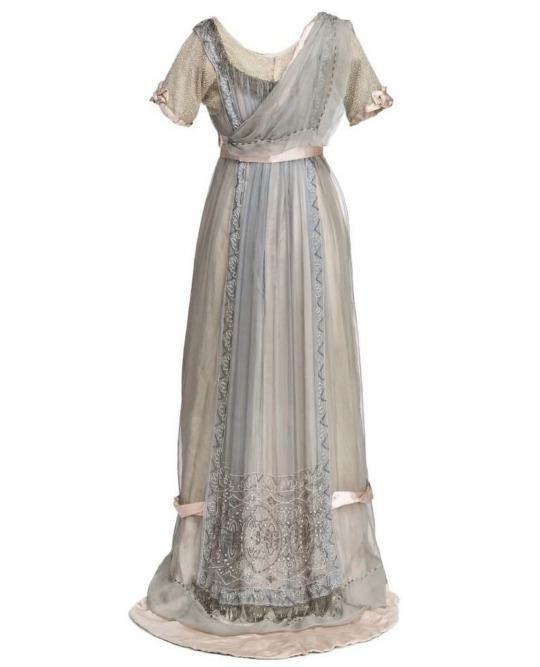
Dress
c. 1910-1915
Museo del Traje
#edwardian dress#edwardian gown#Edwardian#historical fashion#history of fashion#fashion history#fashion#history#historic fashion#historic clothing#frostedmagnolias
227 notes
·
View notes
Text
The non-resplendid Outfit: What poor women wore in the mid to late 1800s, Victorian era

Housemaids, early 1860’s. They are dressed in their best for the photographer, but look at their hands. From Victorian Working Women. They could perhaps have scullury maids, who were a lower ranked of housemaid.

Fig. 1 - Washerwoman and young girl • Mid-1800's

Fig. 2 - From 'Street Life in London', 1877, by John Thomson and Adolphe Smith. "The accompanying photograph represents a second-hand clothes shop in a narrow thoroughfare of St. Giles."
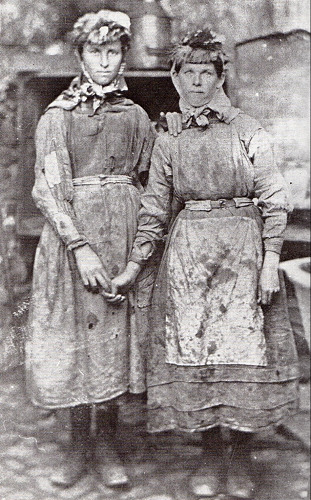
Fig. 3 - These women were referred to as "tip girls". Their job was to unload mine refuse from train cars and on to the "tip" of the mountains of mine waste. Tredegar, Wales, 1865. Photo by W. Clayton from Victorian Working Women
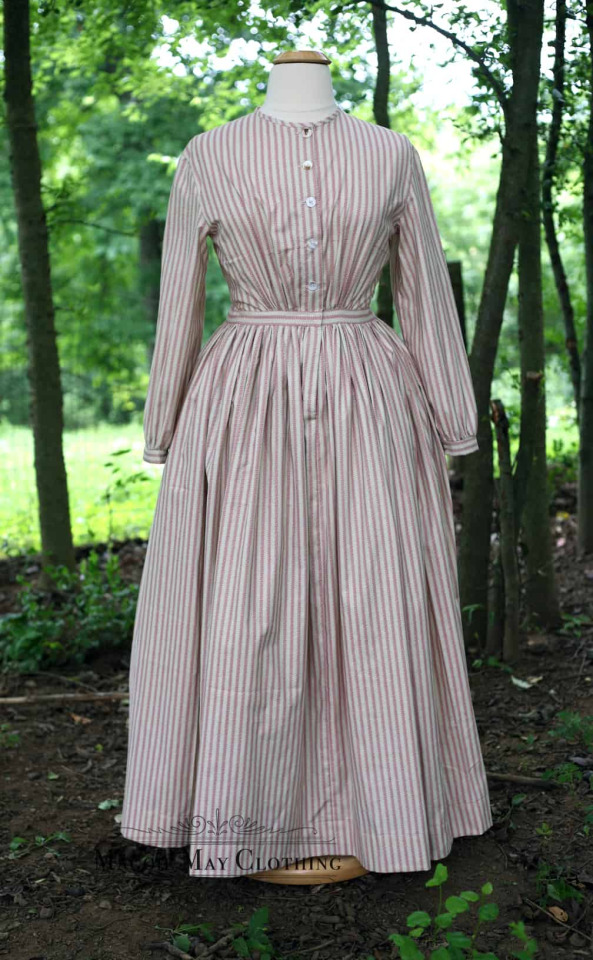
fig. 4 - This dress features a loose fitting, unlined bodice gathered gently under the bust and at the center back. The sleeves are cut moderately to encourage movement and feature a short cuff with button closure. The semi full skirt is gathered into a waistband and attached to the bodice. The skirt is hemmed to the ankle with a single turn hem. The gown closes at the center front with buttons. Shown over over a quilted petticoat and extra full petticoats. Typically worn between 1840 and 1890. This dress is a replica based on research.
Working class women in the Victorian era couldn't afford the latest fashions. They wore simple, practical clothing in a style dependent on their ooccupation. In figure 1, The woman is wearing a simple dress and cape. Her clothing looks clean because she's a washerwoman; her clothing only exposed to water and soap. Her dress is very similar to the one in figure 4.
In figure 2, the women working in the second-hand clothes shop are also performing work that isn't likely to soil their clothing. It's interesting to discover there were such shops. I always assumed poor women of this era made their own clothing.
A job such as handling coal (figure 3) was such dirty work that the clothing worn for it had to be made from thick, rough fabrics and cut loose to facilitate movement. The dirtier and more physically demanding the work, the rougher the clothing.
#fashion history#victorian era#working women#victorian work clothes#1800s women's work#victorian work dress#the resplendent outfit#victorian history#historic photographs#historic clothing#history of workers#women's history
65 notes
·
View notes
Text
it˙s finnished yipeeeeeeeee

their names are Zuzana and Karol Spadli (Fell)
#theyre married your honor#no like genuinely#rybkart#digital art#digital illustration#folklore#slovakia#slovak folklore#historic clothing#good omens#book omens#i cant do backgrounds#aziracrow#aziraphale#crowley#slovak aziracrow
49 notes
·
View notes
Text
Did I tell you guys about the 1840’s lace bonnet I made?
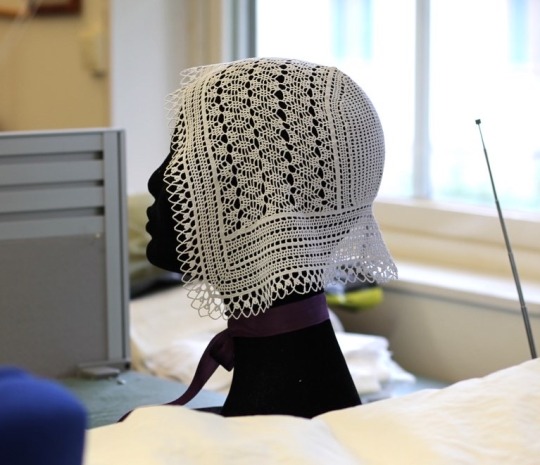


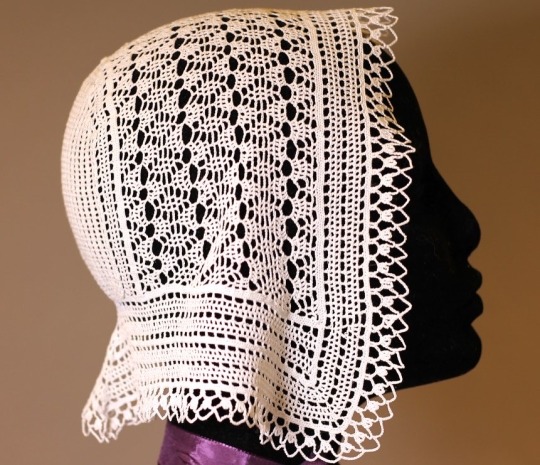
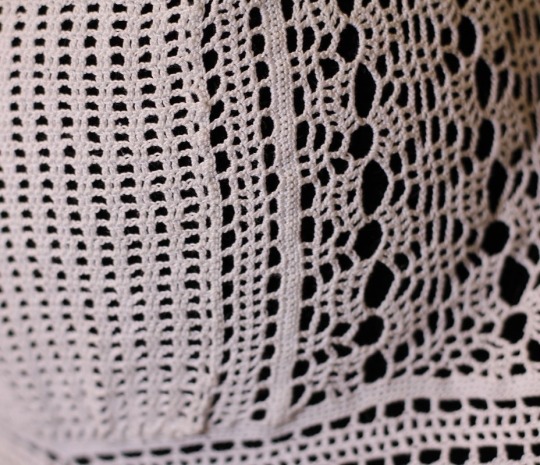

It’s crochet, made from an extant description from one of the first crochet books written in Swedish. Hopefully it will become a part of the guides’ apparel at the outdoor museum “Skansen” in Stockholm. And if it works they might want more!
#my post#crafts#crochet#lace#crochet lace#lace crochet#lacemaking#Sweden#historic clothing#reenactment#recreation
527 notes
·
View notes
Text
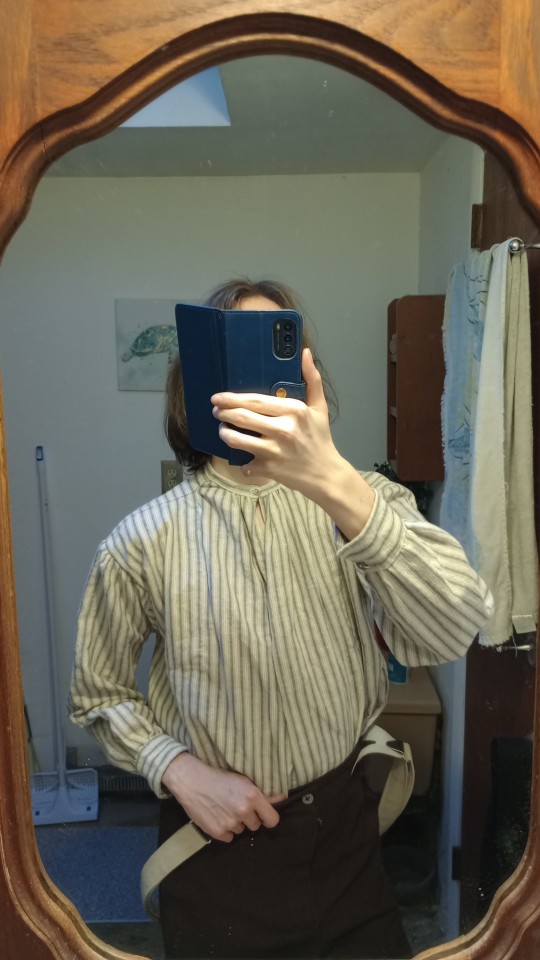
and it's finished! my new mid-19th-century style workshirt is done. made it with a heavy shirting linen I got remnants of for cheap and made it almost exactly to the plan of The Workwoman's Guide (1838/1840) recommendations for laborers' shirts. the entire shirt is hand sewn with stitches appropriate to the period, like felled hems and full backstitching around the armscyes.
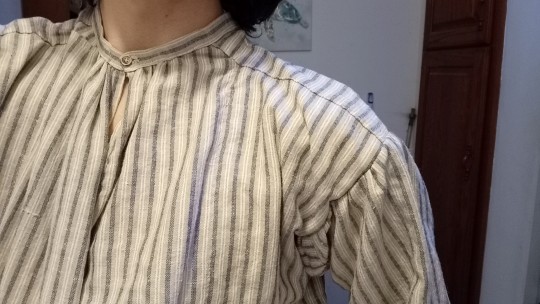
closeup of the shoulder and collar. I made it with a narrow band to allow for detachable collars to be used with it (I have a couple prefabricated ones from when I was first getting into this.) I also gathered the sleeves and collar properly, rather than simply pleating them like last time--much trickier, but more accurate to the examples from the period, and I think more aesthetically pleasing (though my gathers are far from professional-quality.) I had considered adding more buttons down the bosom slit but for the time being I'm happy with the one; the folds of the gathers and any neckcloths I wear basically conceal the hole.

here it is as part of an ensemble (everything else in the photo is prefab.) you can see the detachable collar buttoned on here. unfortunately, the stripes clash with some of my more eccentric ties and cravats, so basic black it is to accompany this one. the collar likes to ride up a little bit and expose my neck in a couple spots, but I've found that wearing the vest and tie help to keep it in place.
only thing on this shirt I'm dissatisfied with is that the sleeves are a little on the short side, which I think is probably just a combination of me being skinny enough to want the small shirt but tall enough that it's a little short, and the general thing where 19th century people were on average a little shorter than people are today. the version of the book I used actually had alternate longer sleeve sizes, because the ones in the first edition were "found scanty", which makes them still being too short kind of funny to me. anyway I'm not changing it because lengthening the sleeves would probably require me to cut fresh, extra-long cuffs and reattach them & I am not doing all that to correct a centimeter of discomfort lmao
anyway, fun project overall! looking forward to my next one.
#sewing#historic clothing#product of like 20 hours blood and sweat (i tried it on multiple times and pricked myself while felling the lining on)#sewing projects
12 notes
·
View notes
Text
In response to a particularly persistent non-follower who continued to question my experiences with antique garments on this post , I had a chance to take a short video with an 1890s bodice in my collection that is boned with baleen. While all antique clothing should be treated with care, baleen does usually remain pretty flexible (the humidity of the environment is a large factor in this - in dry storage environments, it is likely to be more brittle). Accusing the Smithsonian of mishandling a garment by turning it inside-out on a mannequin, however, is kind of ridiculous, and I am sure they considered the potential handling damage carefully before staging that photoshoot.
Transcript:
hey so this is a pretty standard, very late-nineteenth-century bodice. it's a wounded bird so I don't feel bad doing this. (pardon me [for the visuals], i'm only working with two hands here.) this is a bone casing; there IS a bone inside; it is stiff, and if I bend it, it does *not* break. it is still very flexible.
there's a bone in that [other casing] too. now you can see up there that one of them already broke [at the top] (a long time ago, this is before it came into my collection), but there is baleen in there. actually - there's a piece further inside that you can see and pull out but I'm not doing that.
[this video is] just to show that if you bend the baleen, even in the way it's not traditionally supposed to bend, it's totally fine. (oh, there's [baleen visible through a hole] right there.) it is still very flexible more than 100 years after it was installed in this bodice, and it is totally flat when it is not being pressed against something [at a curve].
that is the case for basically every antique garment I have seen; in some cases they are still molded but- I mean, this is just a bodice, it's not a corset; it was not subjected to consistent strain. This is just...how it works.
Hope this clears some things up for casual followers :)
#1890s#historical garments#historic clothing#baleen#video#also! it's relatively common to see broken boning in old bodices - and missing boning since it was often 'harvested' for newer garments!#i have two degrees in museum practice and conservation#happy to debate preservation ethics with you
28 notes
·
View notes
Text
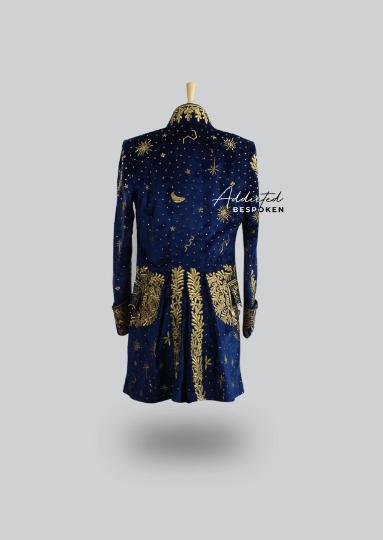
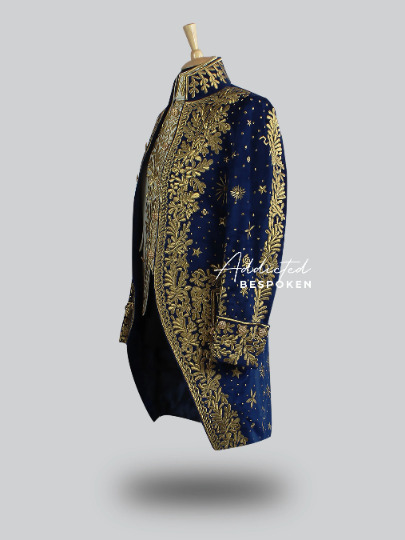
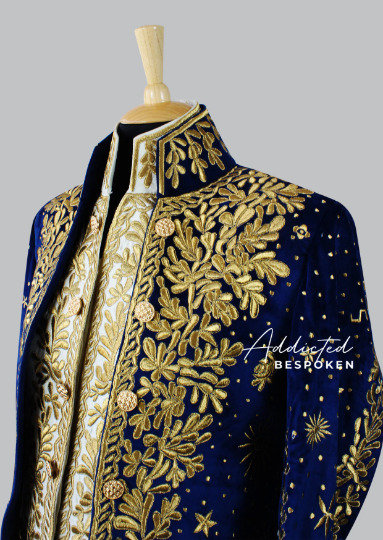

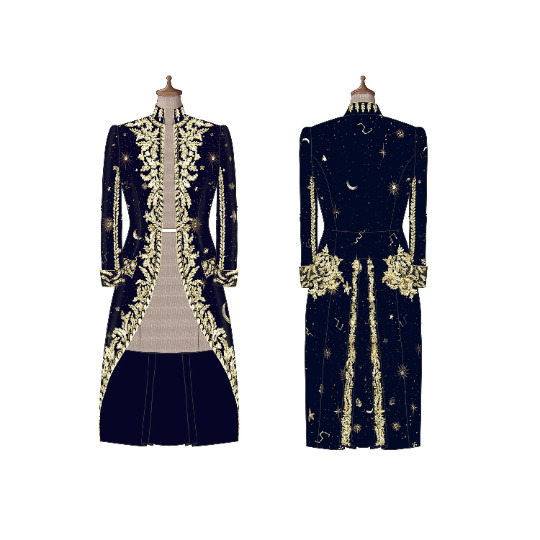

Men Blue Velvet French Nobleman Costume 18th Century Galaxy Stars Gold Embroidered Rococo Wedding Colonial Outfit Free Lace Jabots And Cuff
This 18th Century vintage costume for men is inspired from the magical Venical Carnival & Late Baroque fashion.
The costume can become the zest of any carnival or themed festival and can also be a perfect costume for wedding groom.
This 3Pc court suit include:
•Blue velvet justaucorps embellished with floral & galaxy Stars embroidery & metal button detailing
•Off white paisley print vest embellished with floral embroidery & have button closure
•Blue velvet Breeches with floral embroidery on bottom & metal button detailings & closure
•Laced jabots & cuffs
Features:
•Intricate embroidered
•Lightweight
•Soft & Breathable
•Comfortable wearing in all seasons
Material & Caring:
•Premium Velvet & Eco friendly material
•Dry Clean
•Dry on low heat or hang to let it dry for best results.
#Historical Costume#wedding costume men#1700s costume#Venezia costume#Rococo fashion#Period clothing#fersen court suit#colonial outfit#noble court suit#victorian clothing#renaissance costume#historic clothing#Period Costumes
20 notes
·
View notes
Text

good grief this is OLD and also not finished, but I'm proud of the shading >:]
3 notes
·
View notes
Text
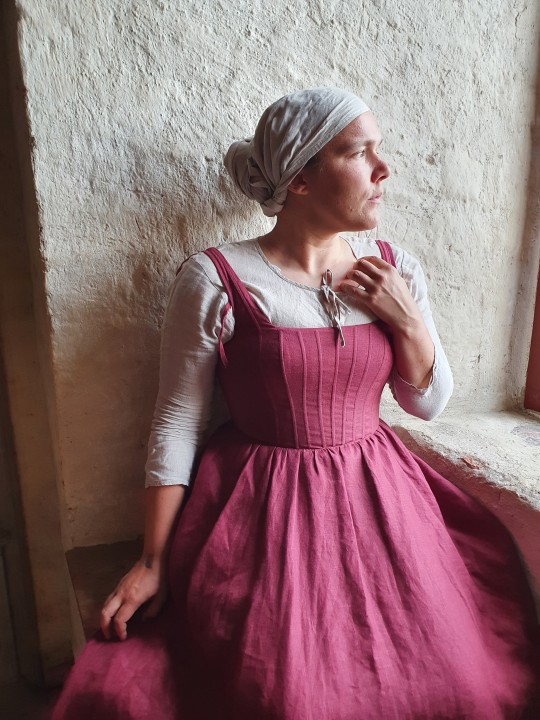
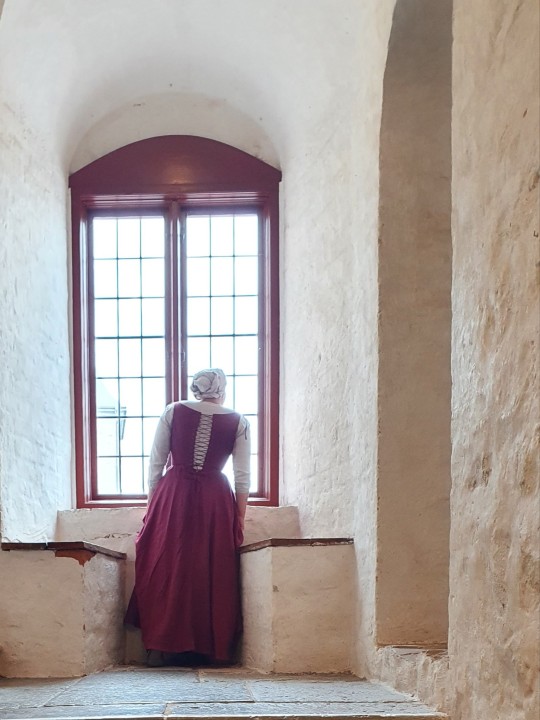
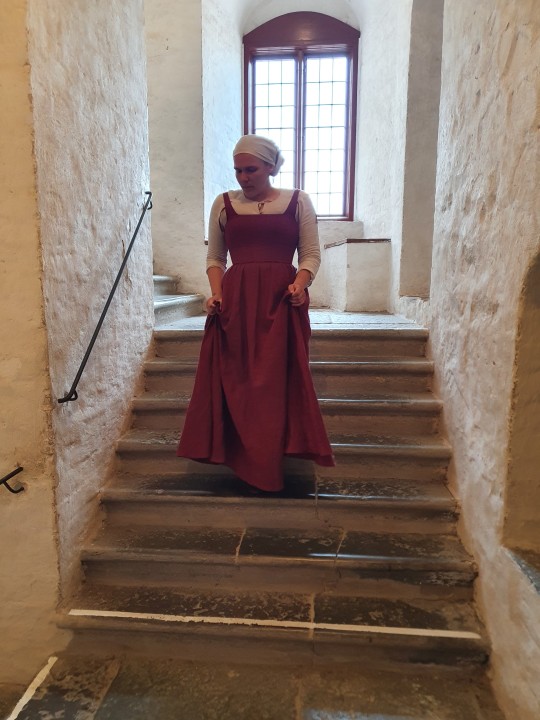



Spent a day at medieval market in Vadstena, and took some pictures in the castle staircase.
The Red dress is from @armstreet , my favourite Ukrainian company. I've made the headwrap and the shoes (pretty much non visible) I'm wearing.
#me#larping#ren faire#Renaissance#Garb#Medieval market#Armstreet#historic clothing#Vadstena#Medeltidsmarknad#Ootd
26 notes
·
View notes
Text
youtube
2 notes
·
View notes
Text
Putting on and Taking off your historic Character's Suits
Little psa about order of operations for menswear dressing and undressing, for writers whose characters get dressed or undressed from their suits c 1900 to 1950.
Order of getting dressed (day): pants/boxer shorts (these closed with buttons!), undershirt, socks and sock suspenders/garters (no elastic in socks) (sock garters are sexy actually), shirt -- add collar here if removable, and cufflinks. trousers/pants with their braces/suspenders. Tie. Waistcoat or sweatervest (for informal/country wear). Shoes. Jacket. Hankie (in breast pocket). Hat, overcoat, gloves, walking stick. Good to go!
Removal happens in the reverse order. As soon as you come inside --anywhere!--, you take off your hat. Hat and stick and overcoat are removed at the door. To get undressed: Jacket, waistcoat, tie, shoes (tie and shoes can be interchanged), braces/suspenders, trousers. VERY IMPORTANT POINT -- your guy is now undressed and he is wearing: SHIRT, UNDERSHIRT, BOXER SHORTS, SOCKS, SOCK SUSPENDERS/GARTERS. This is very sexy. But at any rate, no one's taking off their shirts before their taking off their trousers. Promise. (YOU try to get our of your button-front shirt while your trousers are still attached to your shoulders.) Then, remove cufflinks, shirt (and collar if detachable), socks and their suspenders, undies (shirt and shorts). Ok now your guy is naked. Congrats.
Evening wear variations: Evening dress (whether formal white tie or informal black tie) would almost always include a stiff-front shirt (with 3-4 layers of starched "bosom" on either side of the placket). A stiff-front shirt always takes shirt studs, as the stiffness of the fabric hampers buttons. Soft shirts MIGHT be ok for black tie but etiquette manuals up to WWII were always saying not to do it. For formal wear in the 1930s, the preference was actually for back-opening shirts, so the shirt front stays nicely on the chest with no pulling/opening between buttons - especially if dancing was happening. Fred Astaire, for example, is usually seen in a back-opening stiff shirt in his white tie ensembles. White tie includes a waistcoat (white); black tie in this period usually also had a waistcoat (black), but a cummerbund was acceptable as an alternative, especially in warmer weather/locales. Top hat and white wool scarf (and optional walking stick and overcoat) are the outer wear.
There's a whole other essay on "taste" and being "well dressed" in the interwar era (and what that says about masculinity.........), about color, etc etc. Pre-1900 clothing looked a little different (different shirt construction entirely, for ex). BUT my actual point was really --you can't have your guys get shirtless but still have their trousers on. Sorry. Trust me, your shirt is tucked in so far! Your trousers are so high up! Your braces/suspenders are buttoned into your trouser waistband so as soon as you try to get them off it's easier to take trousers off too, or you pull them off your shoulders and they're hanging there tugging your waistband down and you can't get your shirttails out without undoing your fly anyways...
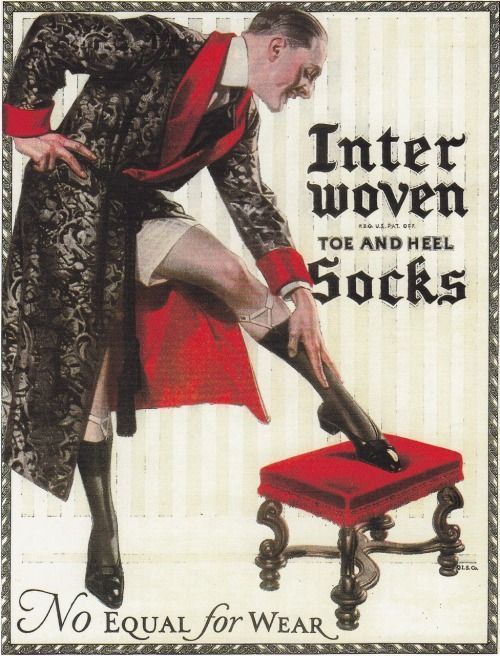
Leyendecker ad -- he's in his shirt and tie, boxers, and socks with their sock garters. Thriving.
1 note
·
View note
Text
Playing Victorian Dress-up

James Tissot (French, 1836–1902) • The Bridesmaid • Between 1883 and 1885
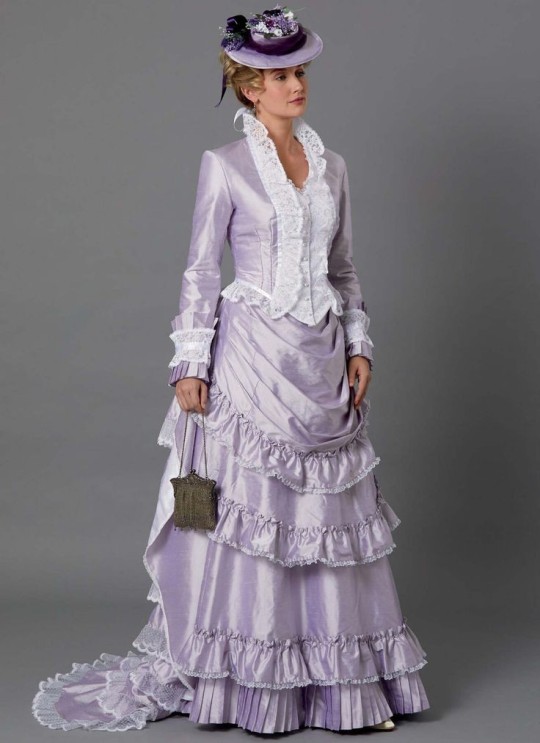
Though not a dead-ringer for the dress in the painting, this real dress bears a great many similarities to it as well as having several details in common with dresses of the period. It's a day dress with the V bodice so prevalent in the mid-1800s. Our Tissot painted lady is wearing what looks like either a separate peplum jacket, or it's all one dress. The similarities lie mostly in the front of the dress. The large, gathered swath of fabric with three layers of ruffles. The Tissot lady's ruffles cascade in very close layers and lacks the pleats at the hem and the train. Still, one can imagine a woman in either dress boarding a carriage with the help of a gentleman holding an umbrella for her.
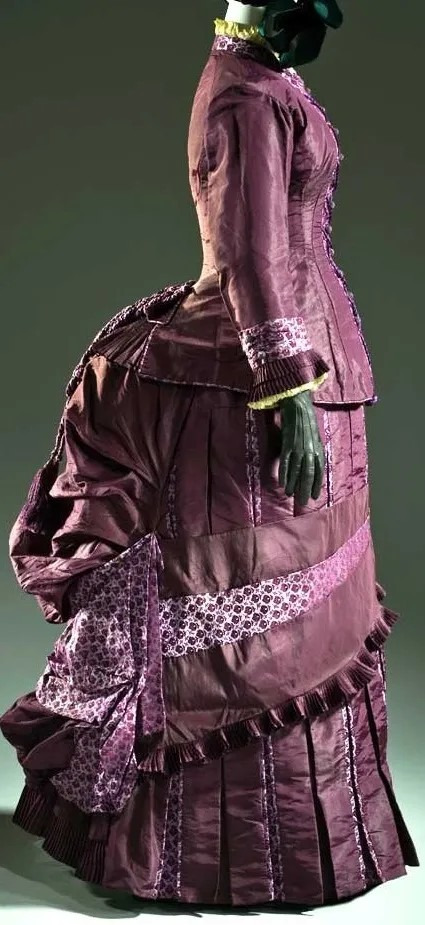
Another day dress from 1885 that would fit the scene we see in Tissot's painting. This one too has a bustle and a peplem jacket.
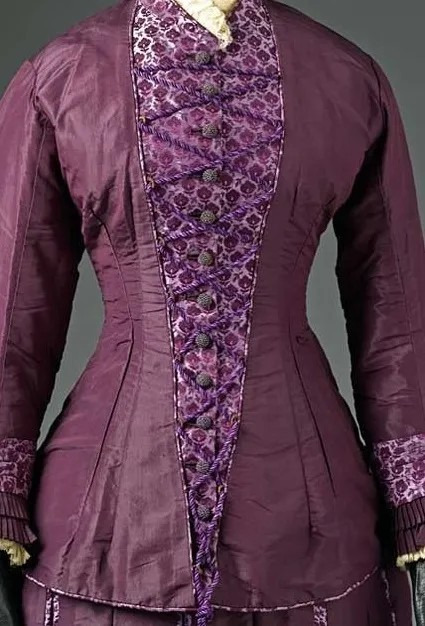
Front view
Now for a hat...

I think this is the one!
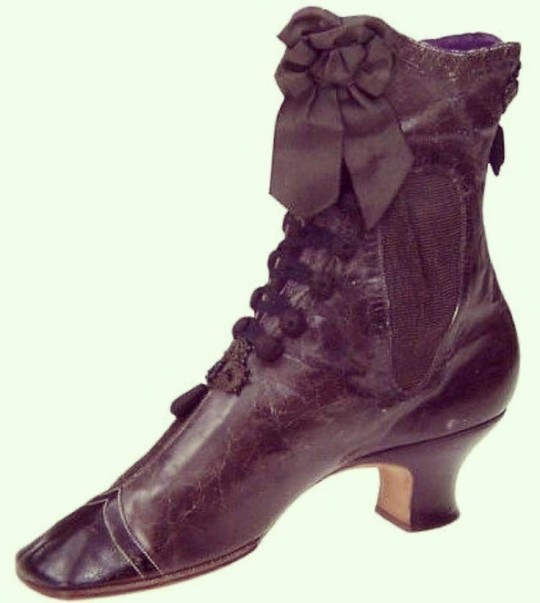
I believe our fictional Parisienne is ready to board that carriage and perhaps join her friend for a stroll in a beautiful park.

This one, perhaps?
#art#painting#genre painting#james tissot#paris#victorian era#1850s#fashion history#women's fashion history#historic dresses#victorian dress-up#the resplendent outfit blog#fashion history blog#historic clothing
17 notes
·
View notes
Text

8 notes
·
View notes
Text
Todays old fashioned textile implement is:
Mangle board!
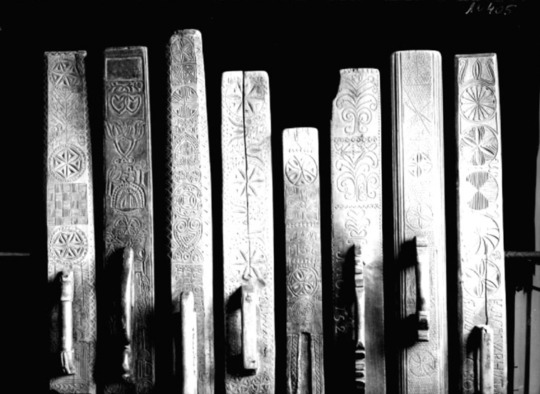
Mangle boards are tools to wring and press fabrics when they are washed or wet in general.
Larger mechanical wringers became popular in the 19th century but the mangle board is common throughout the nordics from the Middle Ages until the turn of the 20th century.
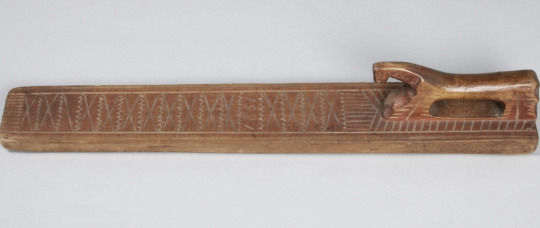
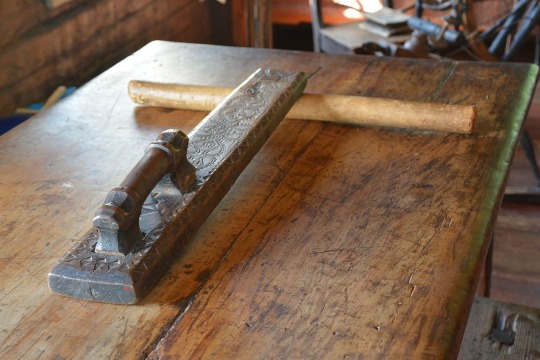
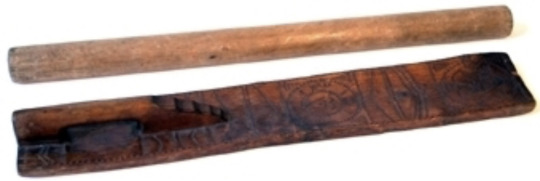
They would be used with a rolling pin, around which the fabric was wound. Then pressure would be applied to wring the fabric.

Mangle boards could be richly decorated and often feature handles carved to look like horses. They were suitable suitor’s gifts.


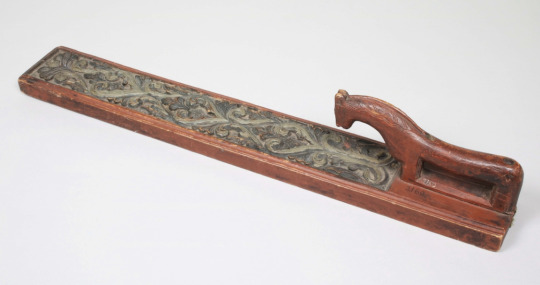
#my post#textilvetenskap#textile history#sweden#historic crafts#cottagecore#historic clothing#my crafting#traditional crafts
142 notes
·
View notes